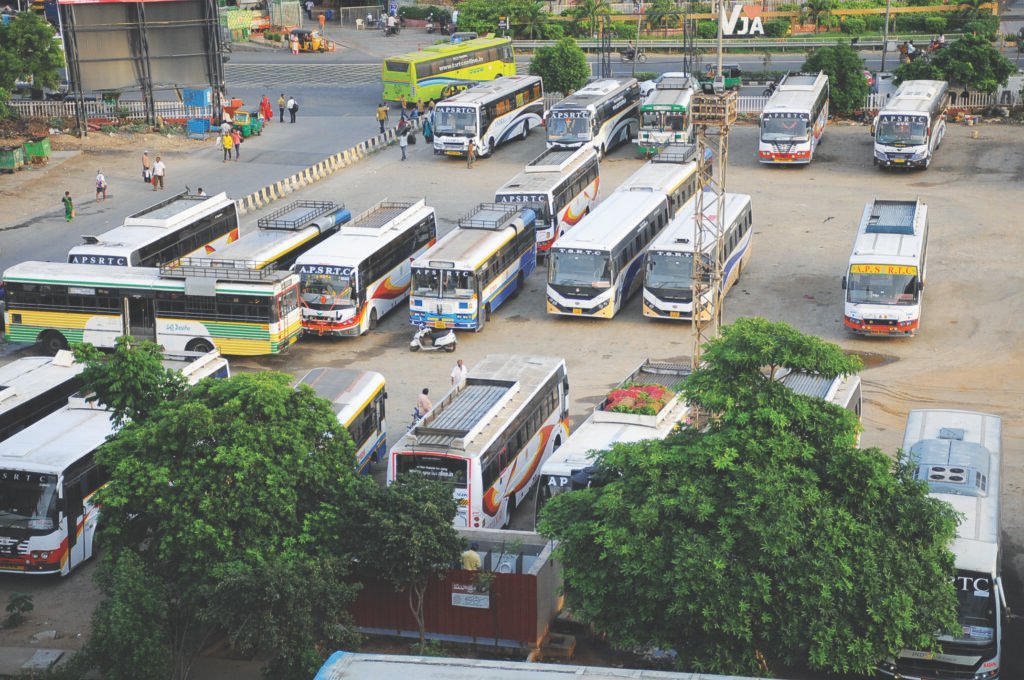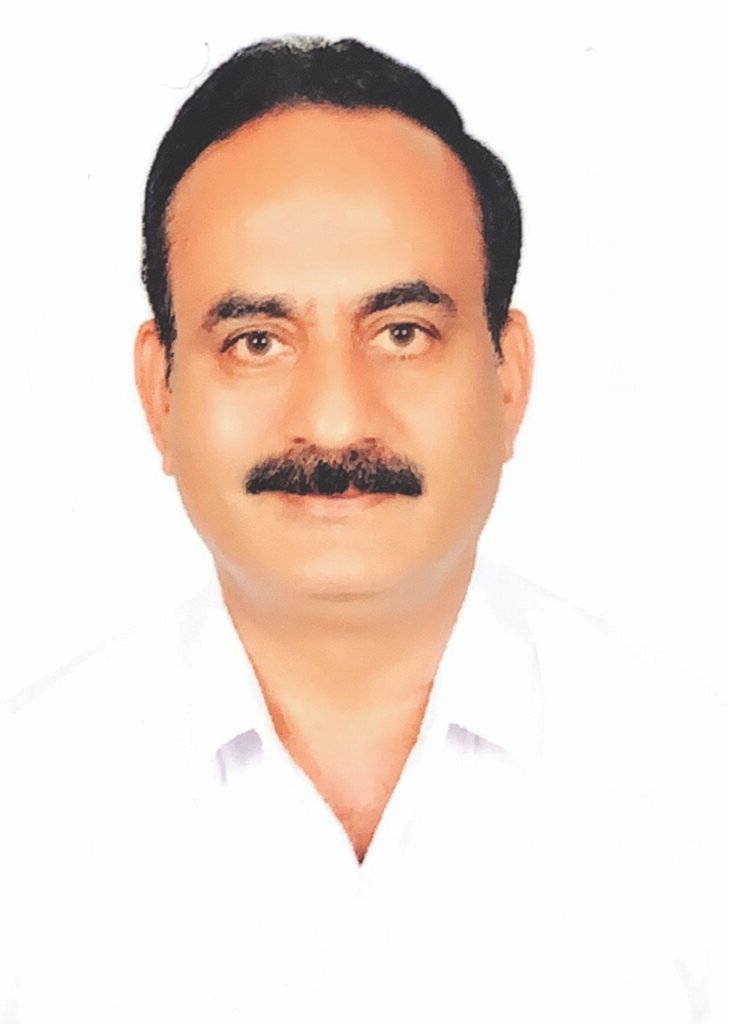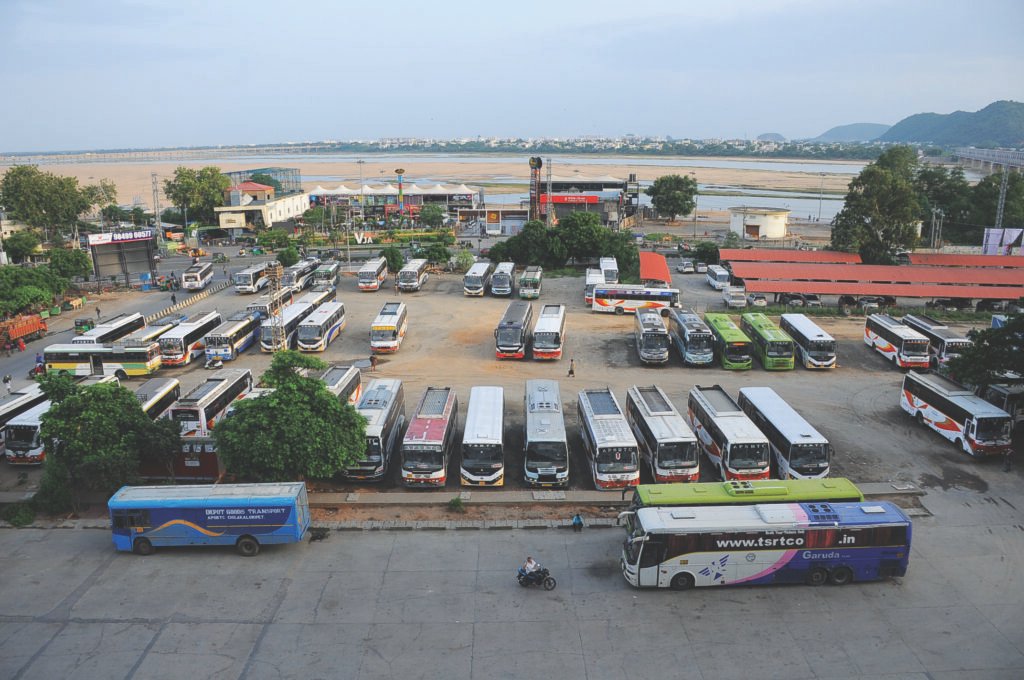
 State Road Transport Undertakings have a big role to play in the mobility of people – interstate and intrastate. Technologies like ITS, Telematics, Vehicle safety, Communication, Routing & Scheduling, etc are increasingly being implemented for seamless travel by SRT buses, states R R K Kishore, Director (Technical), Association of State Road Transport Undertakings.
State Road Transport Undertakings have a big role to play in the mobility of people – interstate and intrastate. Technologies like ITS, Telematics, Vehicle safety, Communication, Routing & Scheduling, etc are increasingly being implemented for seamless travel by SRT buses, states R R K Kishore, Director (Technical), Association of State Road Transport Undertakings.
However, the operational efficiency depends mainly on the health of the buses and roads, good connectivity to rural and semi-rural areas, technology deployed, trained drivers, convenient scheduling etc.
“The Association of State Road Transport Undertakings (ASRTU) has programs and initiatives to enhance productivity and efficiency of STUs. We have 80 SRTUs with us. Collectively, these member undertakings have nearly 1,50,000 buses of which 35,000 buses are city operating buses. Most of the city operating buses, some 30,000 plus, have a few ITS solutions like Vehicle Locating and Tracking Devices (VLTD), mobile apps, etc to improve the quality of public transport. In the rural areas, there is a lot of scope to introduce ITS implementation to improve the operational quality and to plug the service deficiencies.
“The OEMs customise the technology add-ons like passenger information system or destination board inside or outside the buses (taking care of font size, language, duration details etc). Many STUs are doing very good fleet management. Delhi Transport Corporation is having 7000 buses and have implemented ITS in all the buses. Telangana State Road Transport Corporation is operating nearly 2700 buses in Hyderabad city and almost 90 percent of TSRTC buses in the city have Passenger Information System. And in Karnataka Passenger Information System is available in all city buses (6500) operated by BMTC and the long distance night services. Similarly, in Andhra Pradesh state also, Vehicle Locating Devices are functioning in all its 12,000 buses. Further, APSRTC has successfully introduced Unified Ticketing System (UTS) which is passenger friendly and commuters are fully satisfied.”
Kishore added that under the Special Purpose Vehicles that have come up in the recent years, cities like Indore, Bhopal, Jaipur, Amritsar and Chandigarh, operate buses equipped with ITS solutions. “ASRTU has nearly 50,000 buses operating in rural areas and we are trying to implement ITS in these”
Apart from this, there are the ticketing solutions also. Except for Tamil Nadu, all the states have electronic ticket issuing machines. Very soon Tamil Nadu also will go in for electronic ticket issuing machines. The other initiative is the implementation of National Common Mobility Card or open loop card. Some of the STUs have implemented the NCMC which is one card that is acceptable throughout the nation for any transit or paratransit purposes.
Digitalisation, Unified Ticketing Solutions and more

Sudhakar Vasa, Chief Engineer (IT) Andhra Pradesh State Road Transport Corporation gives a detailed account of the changes and reforms put in place by the Corporation over the years to pave the way for smooth running of the buses.
What are the various technologies put in place by APSRTC to increase the operational efficiency of the Corporation?
APSRTC had started its digitalization activity in the year 1987 with the implementation of Payrolls project designed, developed and maintained for processing the salaries, allowances, and deductions etc. of the employees. Subsequently, APSRTC has engaged CMC to design and develop Depot Computerisation Project (DCP) and has implemented it across all the depots of the corporation by the year 1990.
- Various modules of the Depot Computerisation Project developed with 1st gen COBOL are Online Ticket Accounting Systems (OLTAS), Vehicle Maintenance System (VEMAS), Stores Inventory System (STOINS), Personnel Management System (PMS) and Financial Accounting System (FACTIS).
- APSRTC gave top most priority to internal capacity building and successfully maintained the project for 30 years with their core team. The enhancements and changes to overcome the new generation hardware compatibility issues and to achieve single source of truth by horizontal and vertical integration. APSRTC took the decision to implement Enterprise Resource Planning solution for the first time
in the history of public transport realm. - The project was christened “Centralised Integrated solution” and M/s Tata Consultancy Services Ltd., was entrusted as the Service Provider.
- Different modules of CIS project on Oracle APPs platform covered all the functional areas of APSRTC business including
- Hospital management (APSRTC Manages its own hospitals and dispensaries to care for the welfare of its 50,000 plus Employees and also another 50,000 retired employees and their family members)
- Operations Module (11000 buses & four million kms daily).
- Enterprise Asset Management (EAM in 129 depots and four zonal workshops)
- Supply Chain Management (SCM in 129 depots and four zonal stores)
- Human Resources Management System (HRMS in 170 operation and non-operation units).
- Hospital Management System (HMS in two hospitals and 19 dispensaries).
- Payrolls (All units and integration with Govt. financial system)
- Finance (All units).
- Training and LMS (4 zonal training colleges and one central academy).
- Non traffic commercial revenue (432 bus stations)
Unified Ticketing Sytsem coupled with an android based e-POS as the mobile terminal, changed the paradigm by providing a single interface – Opening up vast opportunities to achieve a cashless system especially by leveraging the UPI and wallet models which are the more popular media accepted by the common man.
Improved Ticketing System
Apart from digitising the administrative and functional areas, APSRTC bestowed undivided attention to evolving digital platforms for delivering citizen services advance bus ticketing, bus passes, courier & parcel booking, vehicle tracking & passenger information system, call centre etc., duly integrating cashless payments.
Covid -19 was a watershed moment in the digitisation history of APSRTC where we conceived the single solution for all citizen services and implemented the same as a complete contactless model christened as ‘pratham’ meaning ‘the first’, APSRTC has the tagline ‘Pragathi Ratham’ which means ‘Wheels of Progress’. As the fears of sustained threat of Covid gradually waned, the model was restructured as a sustainable and scalable system with a robust database and backend in the cloud. The new solution is called ‘Unified Ticketing Solution’.

Existing System before UTS
Earlier, APSRTC was delivering various services in silos
- Online advance ticket booking / cancellation, Pre/Postponement.
- Live Tracking of reserved Services
- Online Bus pass system
- APSRTC Logistics (Courier and parcel services)
- Issue of tickets by the conductor / driver inside the bus through the offline Ticket Issue Machines (TIM)
Today Telematics is important for vehicle tracking
APSRTC implemented Vehicle Tracking system in the year 2015 for its entire fleet with a dedicated tracking device which is now integrated with the ticketing device in the new model.
Needless to say, VT&PIS (Vehicle Tracking and Passenger Information Sytem) is an essential value addition to the mobility services a transport organisation provides. It helps the passenger to know the details of live buses running on a route, the Expected Time of Arrival(ETA) of the bus at a bus station, track the bus in real time etc., Several MIS reports can be generated for analysis by the field managers.
Telematics of Vehicle Tracking System:
- Initially, in APSRTC for enabling the vehicle tracking for the buses, Vehicle Mounting Units (VMUs) were fixed inside the buses wherein the units are installed with SIM Cards. The data packets are transferred from the VMUs to the servers and accordingly the data is compiled for projecting the ETAs, statistics, various reports and analytics.
- In the Unified Ticketing Solution (UTS) project, the utilisation of VMUs is discarded and a new concept is adapted. The ePoS devices were introduced and been utilised as a multipurpose android device being used for issuing tickets, GPS polling, real time data syncing with central server etc.
- Through the ePoS device, the GPS packet data is being transmitted and the coordinates are captured. The data is transmitted to the server and the data is being used for compilation and projection of the ETAs, statistics, various reports and analytics. (This model is implemented in APSRTC for the first time in India).
VTS facility enables APSRTC to know the live and vital information on aspects like Departure & Arrival punctuality, Driver performance, Skipping of bus stops by crew,Trip-wise actual running time, Currently running services, Details of Route deviations, Bunching of buses on routes, Un-authorized stoppage, Vehicle status, Feedback and Emergency.
Some of the MIS reports provided through VT&PIS Module include reports on Departure/arrival punctuality, Arrival delay summary, Trip wise actual running time, Bus stops skipped, Route deviation, Unauthorized stoppage, Driver performance, Feedback dashboard & Emergency dashboard, Headway Chart and Auto Announcement Dashboard.
You mentioned organizational restructuring…
The Organization structure of APSRTC was modified initially in the year 1994 by creating Zones which are headed by the Officers of the rank of Executive Director controlling three Regions in each Zone. Each revenue District is generally defined as Region which is coterminous with the District administration, except NEC Region consisting of SKLM and VZM Districts. All the Depots falling in the revenue District are kept under the administrative control of Regional Manager of the Region. Regional Managers are assisted by Senior Managers (2-4) to monitor the OPD, MED etc., activities in the Region.
Later, in the year 2022, Government of AP delineated the existing 13 districts into 26 Districts in the state of Andhra Pradesh. Accordingly, APSRTC was restructured in to four zones and 26 Districts to be functioned in coterminous with new districts formed by the AP government. In the present model, the state Government absorbed all the APSRTC employees as State Government employees and took care of the wage bill. At the same time the functional autonomy of APSRTC in conducting its business is preserved which is the best model to be replicated else where
What is the fleet capacity and what are the special features of the buses?
APSRTC is having 10,914 buses (RTC: 8,266 & Hire Bus: 2648).
The AC buses have comfortable seating, charging ports, reading lights, exclusive luggage compartment, TV, curtains or blinds, bedsheets, water bottle, face freshener (wet wipes),
4 CC cameras.
Feedback is being taken from the passengers through mobile, call centres, online portals and mails and physical interaction at bus stations/ shelters. The special features of AC buses include comfortable seating, charging ports, reading lights, TV, etc. Feedback is being taken from the passengers through Mobile, Call Centres, online portals and mails and interaction at Bus stations/ shelters.
The basic safety components and programs for driver training…
The following are the some of the safety measures and programs being organised in APSRTC:
- A unique concept of “Safety Driving Instructor” (SDI) was introduced in APSRTC in the year 2001 wherein a senior accident free driver is selected and entrusted with the task of inculcating safe driving habits among the drivers of the depot
- Road Safety Week is observed every year and senior most accident free drivers at Depot, District, Zonal & State levels are felicitated with Cash Awards
- Monthly training program is conducted by Operations Department for the drivers, conductors involved in fatal accidents and respective Depot SDIs at Transport Academy, Vijayawada
- Training programs are conducted for accident prone drivers at the 4 Zonal Staff Training Colleges involving RTC, Transport and Police Officials as Guest Faculty.
- “Duty on – Cell phone off” – Drivers are being motivated to switch off their cell phones while driving the bus
- Safety Driving Allowance is being given to accident free drivers every year as a motivational measure
- Medical fitness of drivers is ensured through Periodic Medical Examination for every 3 years up to 45 yrs age & for every year after 45 years
- Drivers are subjected to breath analyser test before proceeding for duty and en-route to prevent drunken driving
- Drivers are ensured to recite “Bhadratha Sukthi”(Oath for safety) before proceeding duty
- Bhadratha (Safety) Card showing accident prone spots of the route with safety precautions
- Installation of cell phone signal jammer around the driver seat is under examination
- Drivers are counselled regularly for safe driving, including family counselling
- Fixed Drivers: Fixed duties are allotted to drivers so as to gain more knowledge on roads and to minimize accidents
- Pamphlets containing precautions to be taken during monsoon season are given to drivers
- Drivers are encouraged to keep the picture of their family in front of them.
- Placard saying “Driver Gaaru Jagratha Saaru” is pasted on the windshield in the field of vision
- Accident maps / Accident clocks are also being exhibited at Depots to educate the drivers on accident prone areas
- To avoid the distraction to the drivers, providing of mobile numbers of service drivers to the passengers was withdrawn and all the information to passengers is disseminated through mobile APP and the 24 X 7 call centre
- At the time of induction of drivers in to the organisation, 7-week practical training on defensive driving & one-week theory is being imparted to every driver
- Special training is organized every month for the drivers who are involved in damages, accidents, discuss and analyse the cause of accidents and to educate them. Drivers are being trained for defensive driving habits as well.
- The accident free drivers are rewarded with cash and certificates
In addition to the above, APSRTC is conducting special programs twice a year in the form of “Road Safety Week” and “Accident Free Week” in accordance to the central government rules and policies. Further, the longest accident free record drivers are being directed to the program organised by the Ministry of Road Transport and Highways, wherein our drivers are getting prizes in the category of longest accident free service record for the past many years consecutively.
APSRTC has developed the concept of converting existing diesel fueled buses into electric buses and the first prototype is currently serving passengers successfully from Tirupathi (Another 100 fully built electric buses are also in operation).
 TrafficInfraTech Magazine Linking People Places & Progress
TrafficInfraTech Magazine Linking People Places & Progress